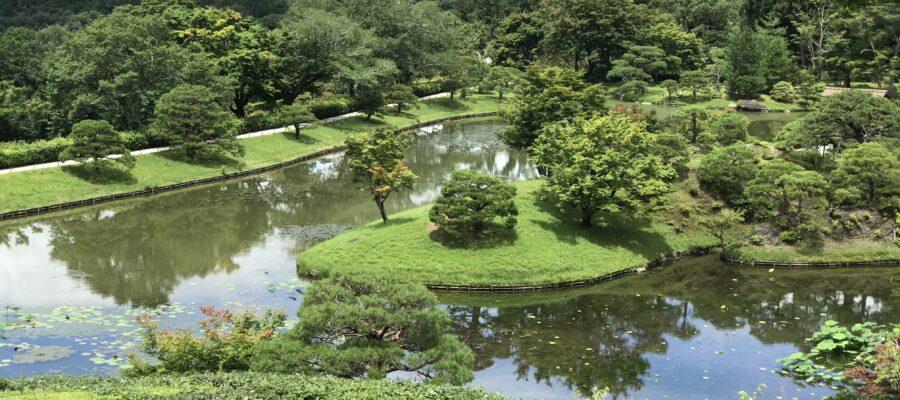【じゃらん】国内25,000軒の宿をネットで予約OK!2%ポイント還元!
中離宮を出て耕作地の中を通る松並木を通って上離宮へ向かいます。この松は明治天皇が行幸された際に整備されたもので、後水尾上皇の時代は田んぼ中の畦道だったそうです。暑い日差しの中、ようやく上離宮の御成門に到着しました。中に入ると再び急な登り道が続きます。
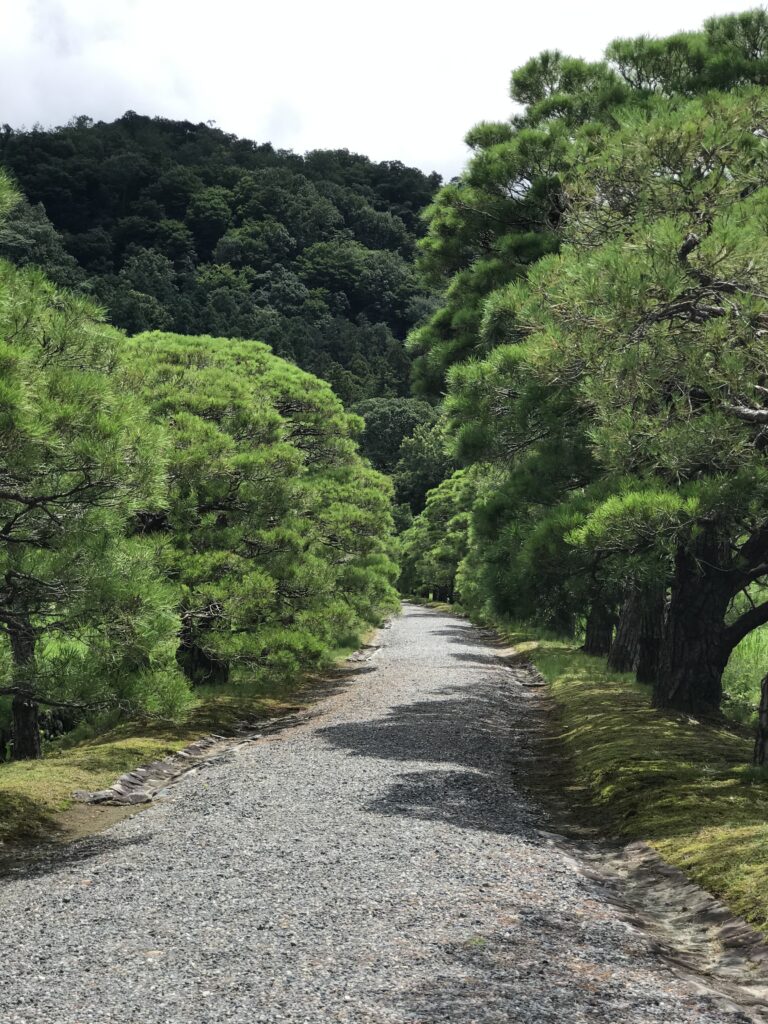
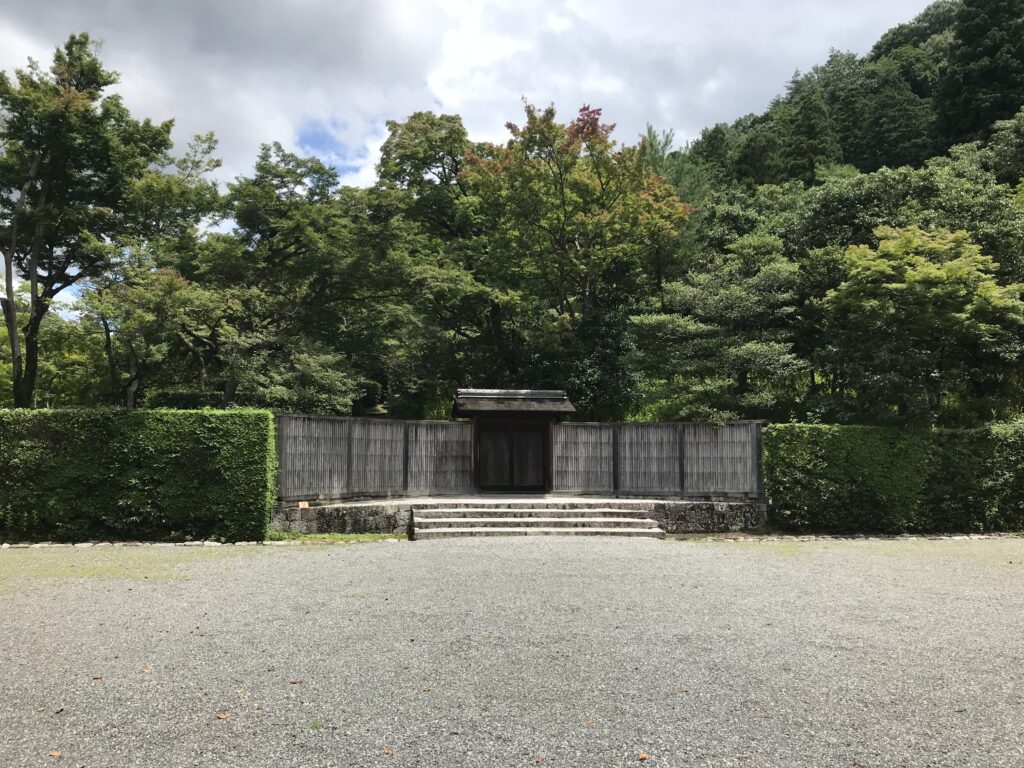
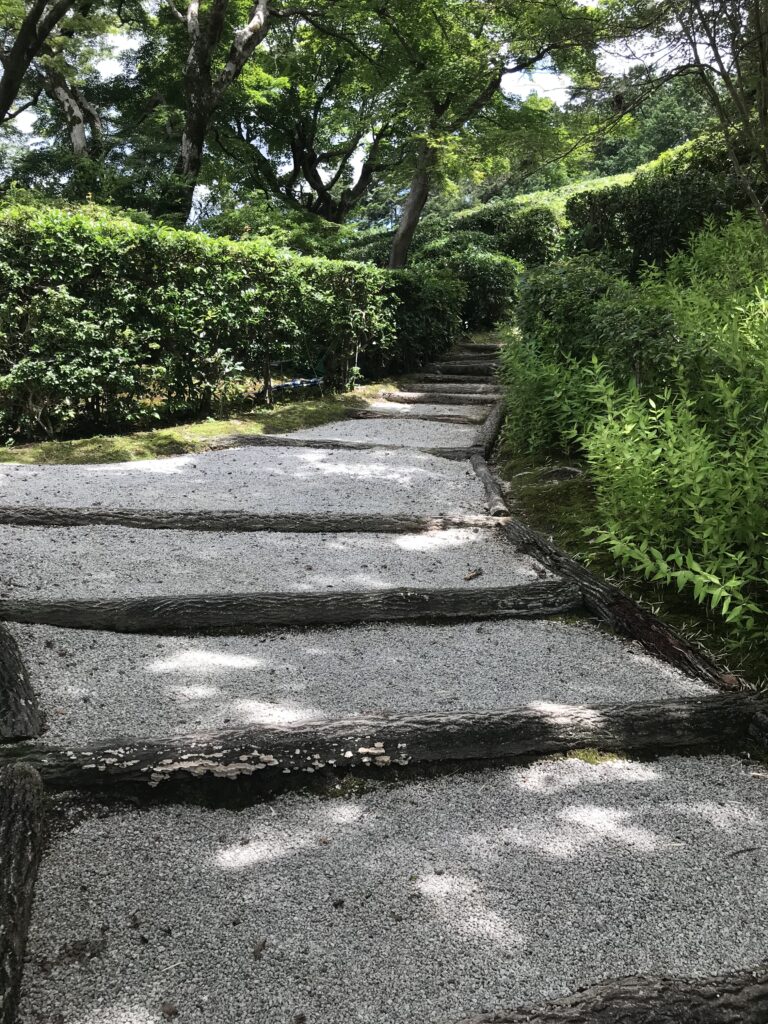
道の両側が刈込みで視界を遮られ前方に何があるのか見えない趣向です。ようやく表れたのが隣雲亭です。素朴な建物ですが、縁側の下には小さな石を1つ、2つ、3つと埋め込んだ一二三石になっています。細かなデザインのやさしさに、心が和みます。
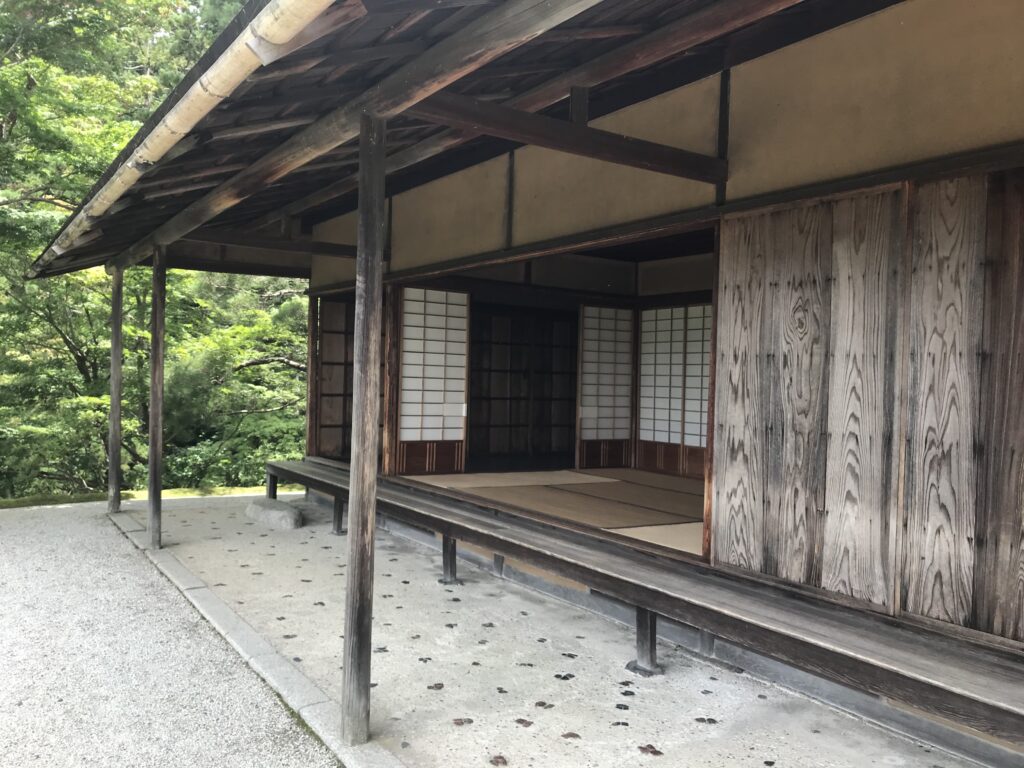
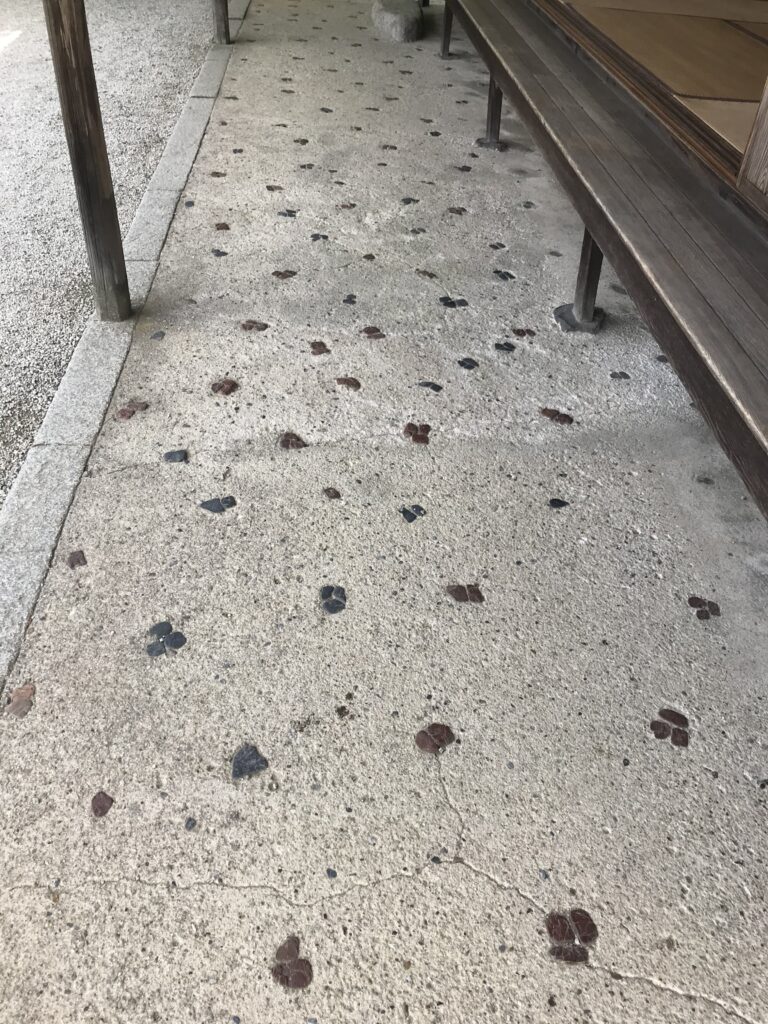
ここは頂上にあるため、振り向くと壮大な景色が広がっています。真下に浴龍池が展開し、その向こうに京都北部の山の峰を望むことができます。視線を西方向に移していくと、京都市中も見えてきます。南禅寺の三門の2階から石川五右衛門が「絶景かな!」と叫ぶ歌舞伎のシーンがありますが、五右衛門がここに立ったら、なんと叫んだでしょうか。後水尾上皇も、自らが作り上げたこの景色に誇りをもっておられたでしょう。
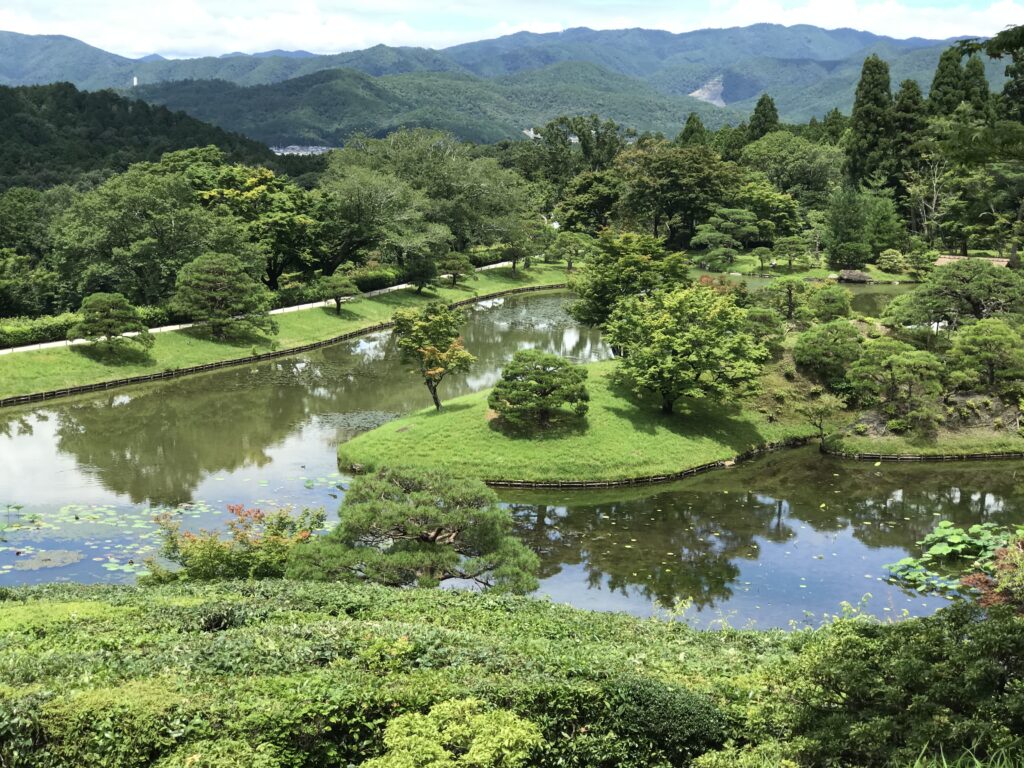
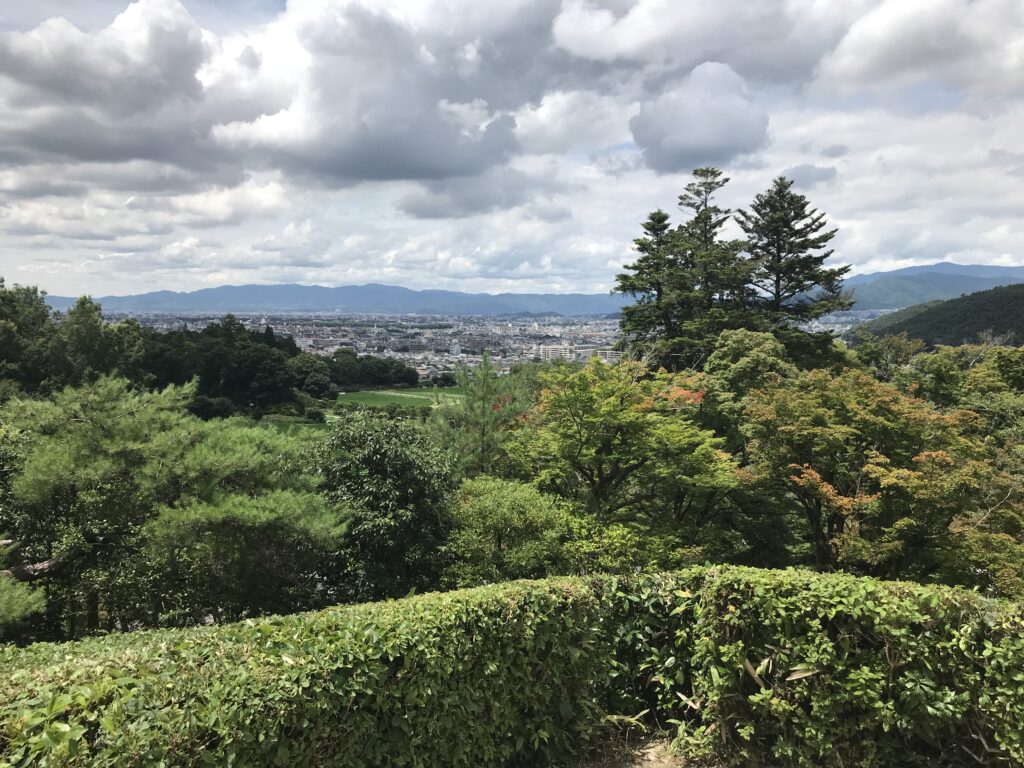
この人口池は龍が泳ぐ姿をイメージできるので、浴龍池と呼ぶらしいです。早速下りて向かいます。途中、石段の横に石灯籠が立っています。控えめですが、絵になる姿の良さを写真に収めました。遠くに千歳橋が見えます。19世紀前半に京都所司代から献上された橋なので、後水尾上皇はご覧になっていませんが、異国風の趣のあるこの橋が、日本庭園にアクセントを付けています。
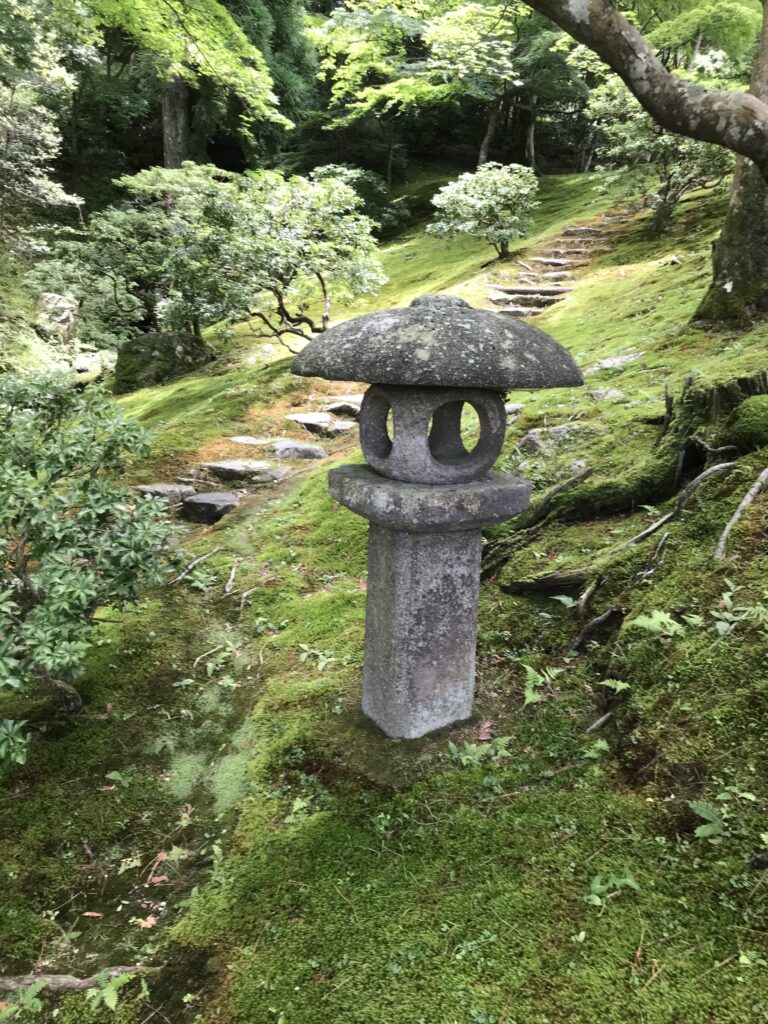
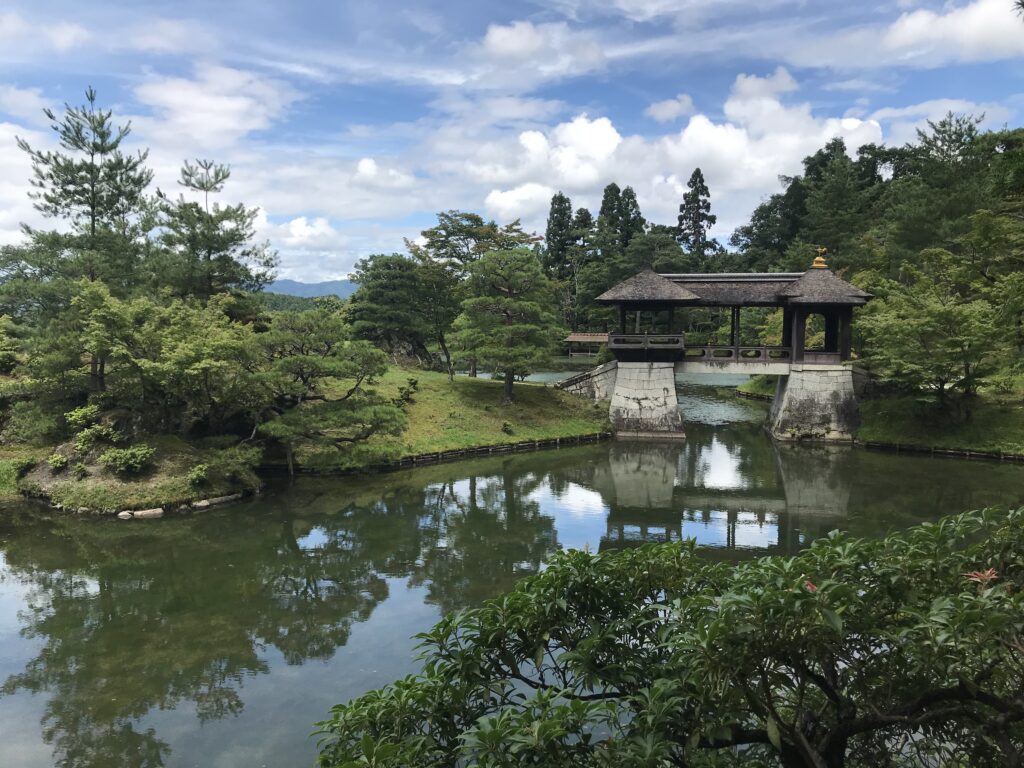
木製の楓橋を通って中島に渡り、茶屋の窮邃亭に来ました。ここの扁額も後水尾上皇の宸筆ですが、字が薄くなっていたよく見えませんでした。ここの畳の間に上段が設けられています。ここから浴龍池を眺めておられたのでしょうか。池の上を風が通って、夏も涼めたかも知れません。
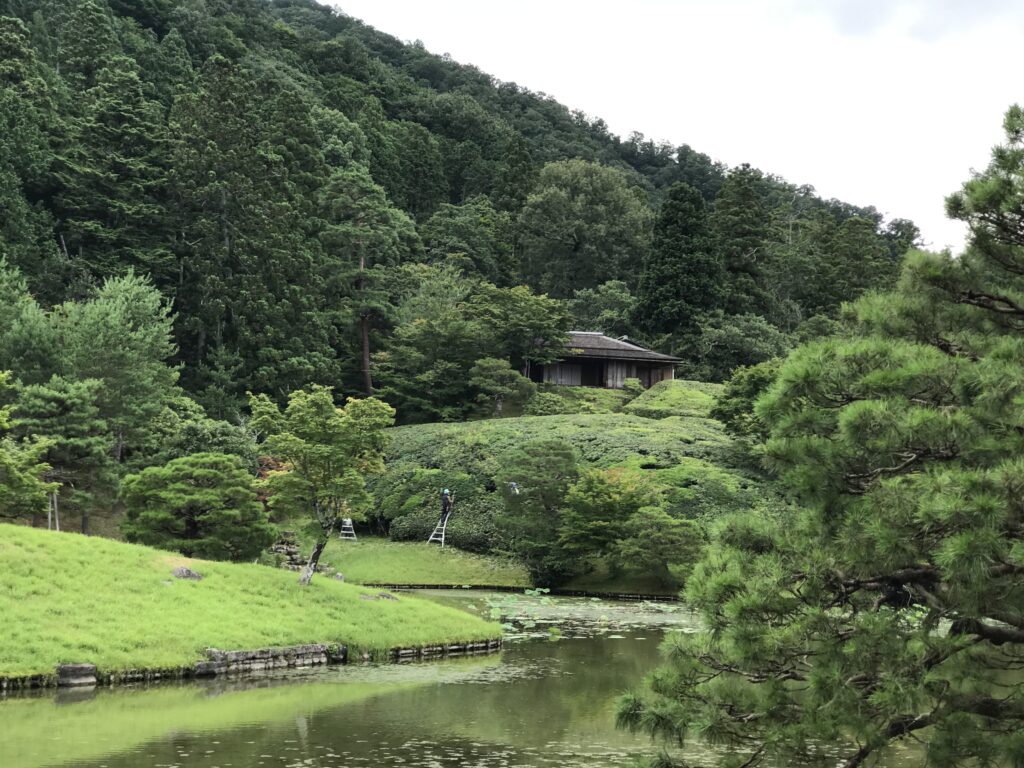
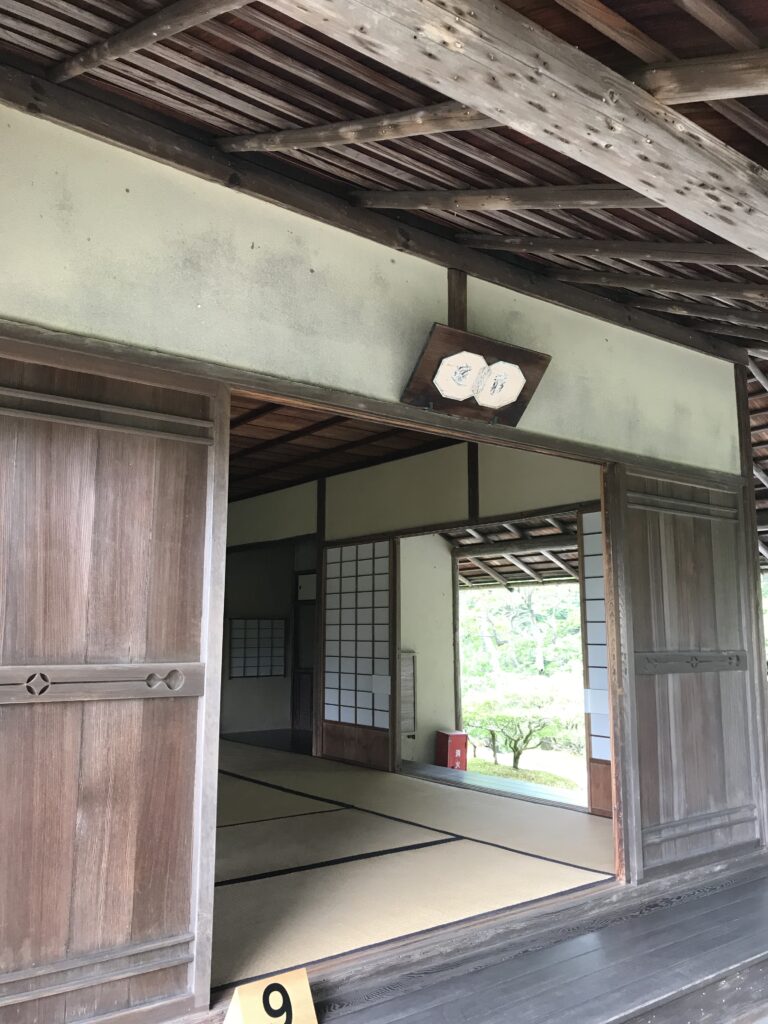
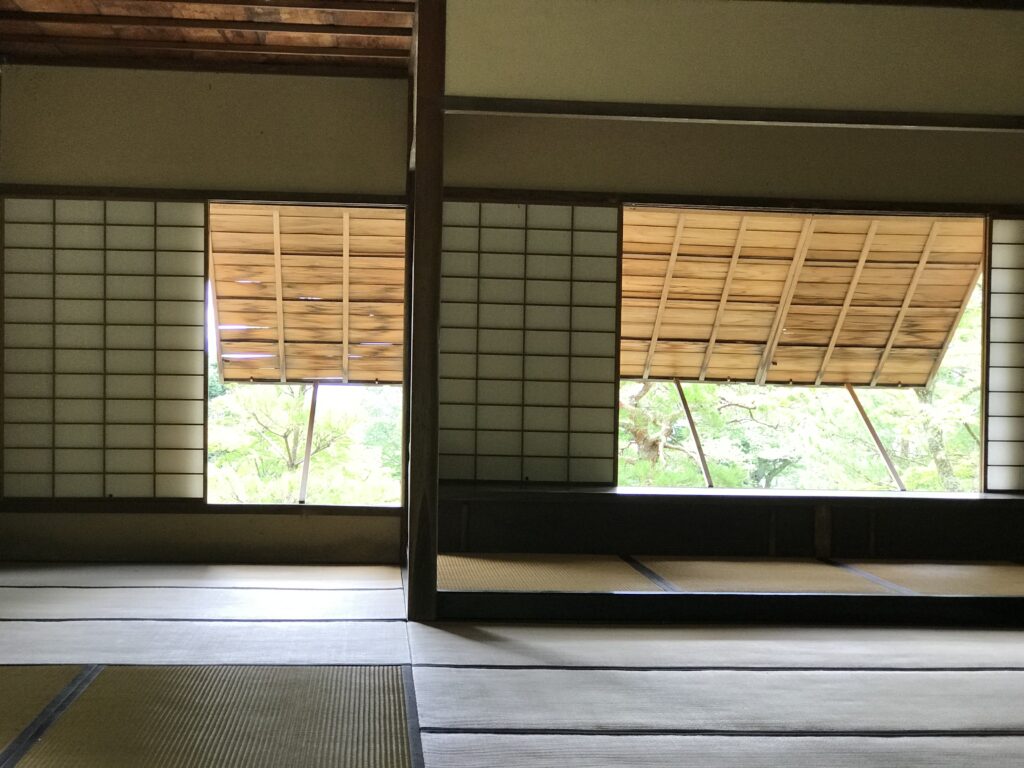
浴龍池を回遊して西浜まで歩いてきました。対岸には千歳橋や楓橋が見えます。また、楓橋からさらに左方向には舟着場もあります。優雅な舟遊びの場でもあったようです。後水尾上皇と言えば、紫衣事件など、徳川幕府との対立があり大変な思いをされたと推察されますが、この庭園で心の安らぎを取り戻しておられたのでしょう。(完)
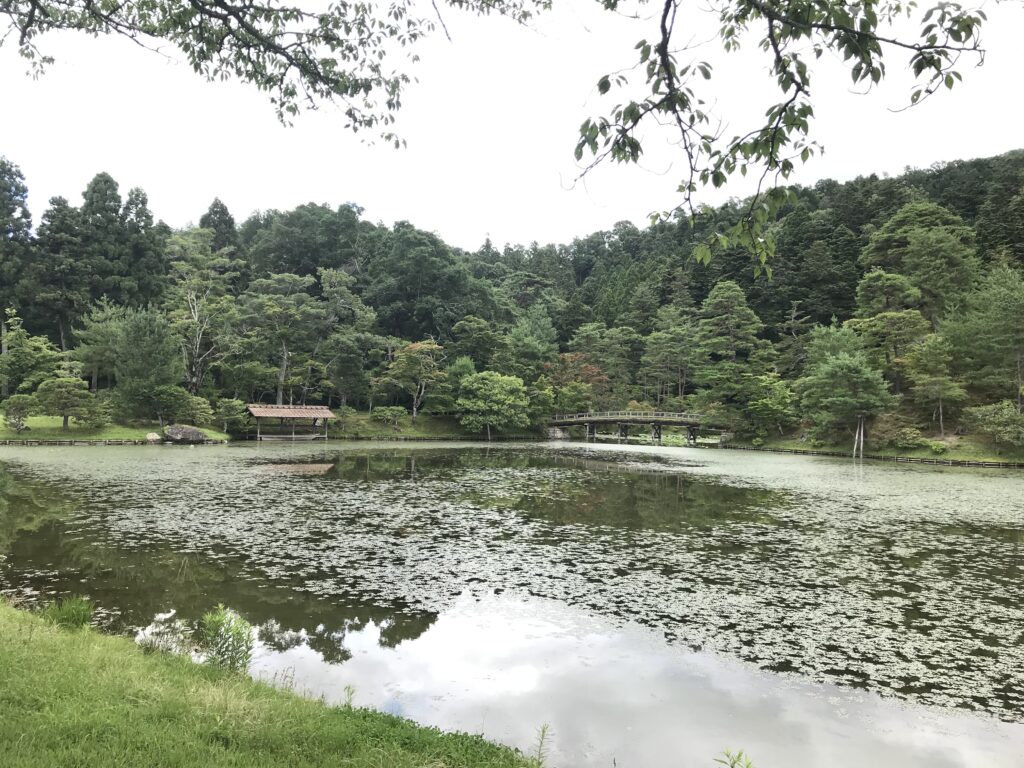
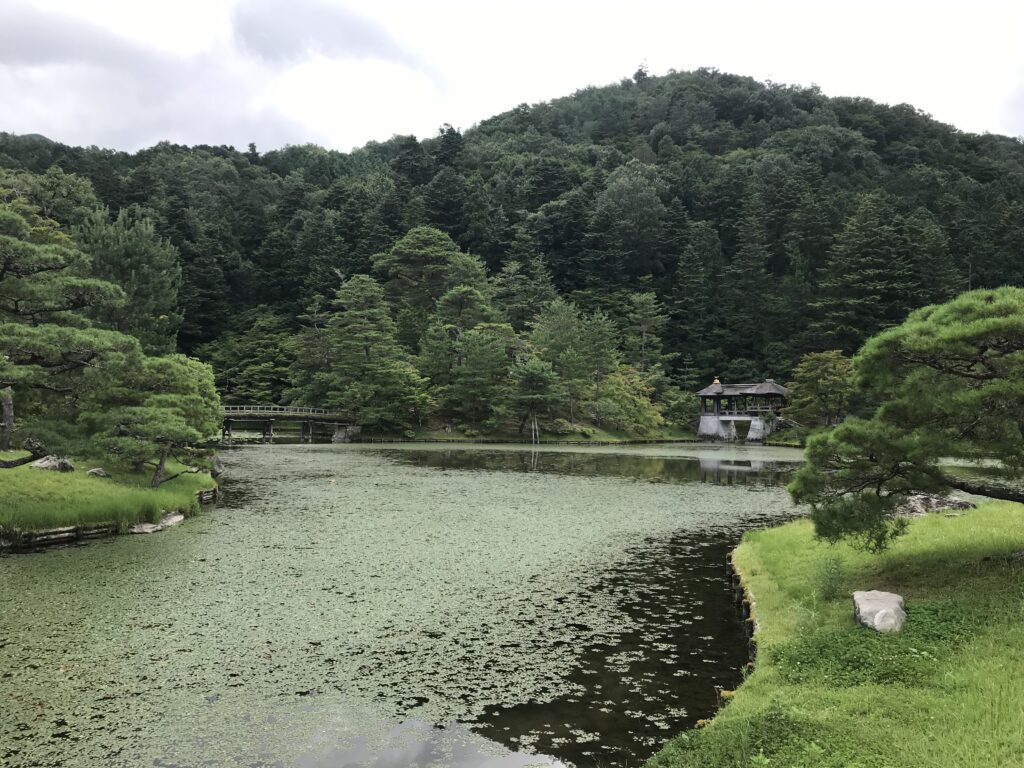
修学院離宮が紹介されている書籍
烏賀陽百合さんの「しかけにときめく『京都名庭園』」に修学院離宮が解説されています。
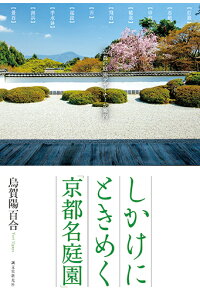
しかけにときめく「京都名庭園」 京都の庭園デザイナーが案内 [ 烏賀陽 百合 ]
価格:1,760円
(2021/5/3 10:53時点)
感想(0件)
The Academy’s Departure Palace ③ The Upper Departure Palace
Leaving Naka-Rikyu, head towards Kami-Rikyu through a row of pine trees that pass through cultivated fields. These pine trees were maintained when Emperor Meiji made his visit, and in the time of Emperor Gomizuno, the path was a footpath between rice paddies. In the hot sunshine, I finally arrived at the Onarimon gate of the Kami-Rikyu Palace. Once inside, the path climbs steeply again.
Both sides of the path are cut into the road, blocking the view and making it difficult to see what lies ahead. The Neighbourhood Cloud Pavilion finally emerges. It is a simple building, but under the veranda there are one, two or three small stones embedded in the ground. The gentleness of the detailed design is heartwarming.
Because of its location at the top, this place offers a spectacular view when I turn around. The Yokuryu Pond unfolds directly below me, and beyond it I can see the mountain peaks of northern Kyoto. As I shift my gaze to the west, I can also see the entire city of Kyoto. From the second floor of the three gates of Nanzenji Temple, Ishikawa Goemon exclaims, “Is that a great view!” What would Ishikawa Goemon have exclaimed if he had stood here? I am sure that Emperor Gomizuno must have been proud of this view that he had created.
This artificial pond is said to be called Yokuryu-ike because of the image of a dragon swimming in it. I went down to the pond as soon as possible. On the way down, a stone lantern stands next to the stone steps. It is modest, but I took a picture of its picturesque appearance. In the distance, I can see the Chitose Bridge, which was presented by the Kyoto governor in the first half of the 19th century, so Emperor Gomizuno never saw it, but it has an exotic flavor and adds an accent to the Japanese garden.
Crossing over to Nakajima via a wooden maple bridge, I came to a teahouse called “Kyu-ko-tei”. The flat plaque here is also in Emperor Gomizuno’s imperial handwriting, but the characters were faded and could not be seen clearly. There is an upper level in the tatami room here. It is likely that he viewed the Yokuryu Pond from here. The breeze over the pond may have cooled them in summer.
I walked around the Yukuryu Pond and walked to the west beach. Chitose Bridge and Kaede Bridge can be seen on the other side of the river. There is also a boat landing further to the left from Kaede Bridge. It seems to have been a place for elegant boating. Speaking of Emperor Gomizuno, it is assumed that he had a hard time because of the conflict with the Tokugawa Shogunate, such as the Murasaki Incident, but he must have regained peace of mind in this garden. (End)
Le Palais des départs de l’Académie Le Palais des départs supérieur
En quittant Naka-Rikyu, dirigez-vous vers Kami-Rikyu en passant par une rangée de pins qui traverse des champs cultivés. Ces pins étaient entretenus lors de la visite de l’empereur Meiji, et à l’époque de l’empereur Gomizuno, le chemin était un sentier entre les rizières. Sous un soleil de plomb, j’arrive enfin à la porte Onarimon du palais Kami-Rikyu. Une fois à l’intérieur, le chemin grimpe à nouveau en pente raide.
Les deux côtés du chemin sont coupés dans la route, bloquant la vue et rendant difficile de voir ce qui se trouve devant. Le pavillon des nuages du quartier apparaît enfin. C’est un bâtiment simple, mais sous la véranda, il y a une, deux ou trois petites pierres enfoncées dans le sol. La douceur de la conception détaillée fait chaud au cœur.
En raison de son emplacement au sommet, cet endroit offre une vue spectaculaire lorsque je me retourne. L’étang Yokuryu se déploie directement sous moi, et au-delà, je peux voir les sommets des montagnes du nord de Kyoto. En déplaçant mon regard vers l’ouest, je peux également voir la ville entière de Kyoto. Du deuxième étage des trois portes du temple Nanzenji, Ishikawa Goemon s’exclame : “Quelle vue magnifique !” Que se serait exclamé Ishikawa Goemon s’il s’était tenu ici ? Je suis sûr que l’empereur Gomizuno a dû être fier de cette vue qu’il avait créée.
On dit que cet étang artificiel est appelé Yokuryu-ike en raison de l’image d’un dragon qui y nage. Je suis descendu à l’étang dès que possible. En descendant, une lanterne en pierre se trouve à côté des marches en pierre. Elle est modeste, mais j’ai pris une photo de son aspect pittoresque. Au loin, je peux voir le pont Chitose, qui a été présenté par le gouverneur de Kyoto dans la première moitié du 19e siècle. L’empereur Gomizuno ne l’a donc jamais vu, mais il a une saveur exotique et ajoute un accent au jardin japonais.
En traversant vers Nakajima par un pont en bois d’érable, je suis arrivé à un salon de thé appelé “Kyu-ko-tei”. La plaque plate ici est aussi dans l’écriture impériale de l’empereur Gomizuno, mais les caractères étaient effacés et ne pouvaient pas être vus clairement. Il y a un niveau supérieur dans la salle de tatami ici. Il est probable qu’il ait vu l’étang de Yokuryu d’ici. La brise au-dessus de l’étang a pu les rafraîchir en été.
J’ai fait le tour de l’étang Yukuryu et j’ai marché jusqu’à la plage ouest. On peut voir le pont Chitose et le pont Kaede de l’autre côté de la rivière. Il y a également un débarcadère de bateaux plus loin sur la gauche du pont Kaede. Il semble qu’il s’agissait d’un lieu de navigation élégante. En parlant de l’empereur Gomizuno, on suppose qu’il a eu des moments difficiles à cause du conflit avec le shogunat Tokugawa, comme l’incident de Murasaki, mais il a dû retrouver la paix de l’esprit dans ce jardin. (Fin)
